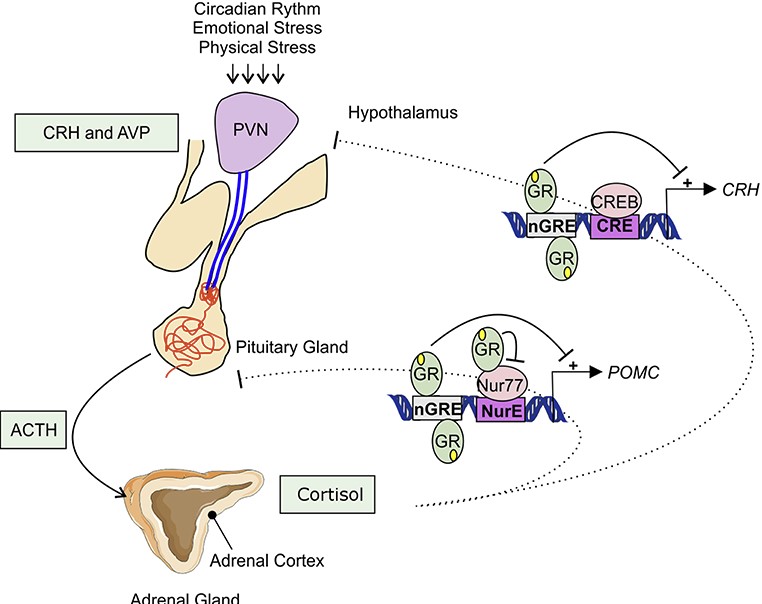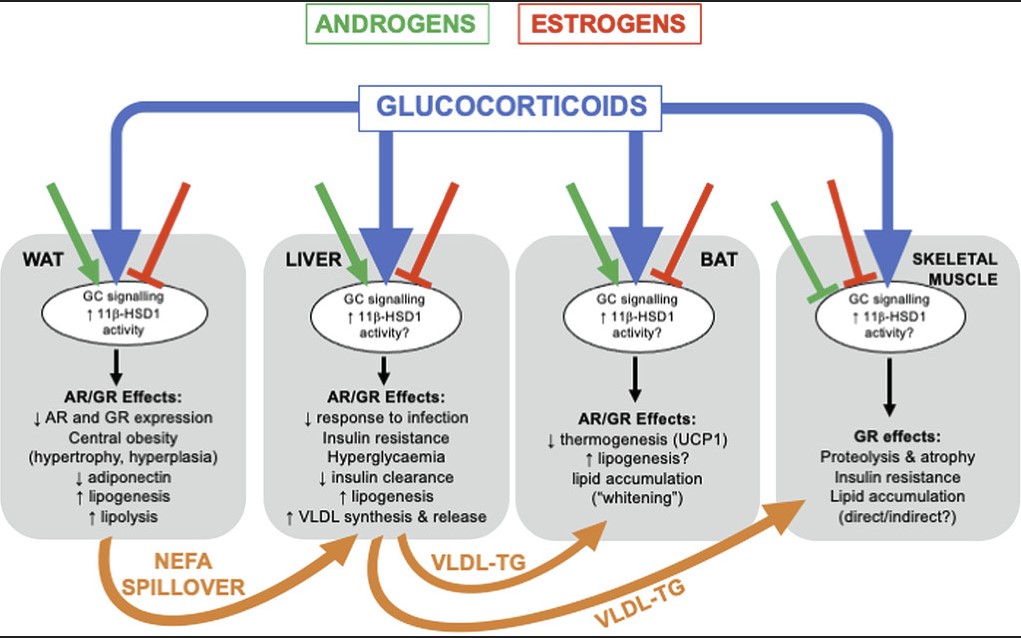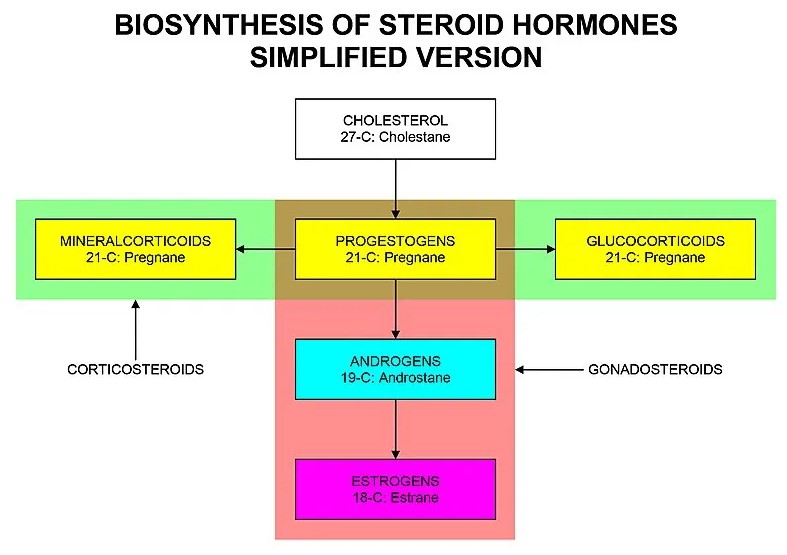Hormones play a crucial role in the complex biological orchestra of our bodies, acting as messengers that regulate various physiological processes. Among these, glucocorticoids and corticosteroids stand out for their significant impact on inflammation, immune responses, and metabolism. These compounds, while often mentioned together, serve distinct roles that are essential for maintaining health and combating diseases.
Glucocorticoids and corticosteroids are two types of steroids produced in the adrenal cortex, with glucocorticoids mainly affecting the metabolism of carbohydrates, fats, and proteins, and corticosteroids being a broader category that includes both glucocorticoids and mineralocorticoids, which regulate salt and water balances in the body. The key difference lies in their functions and the physiological effects they exert, which can be critical in the context of medical treatments and therapies.
The distinction between glucocorticoids and corticosteroids is not merely academic but has practical implications in healthcare. Understanding these differences is vital for medical professionals when prescribing treatments for a range of conditions, from autoimmune diseases to chronic inflammation, and for patients managing these conditions. This knowledge helps in making informed decisions about treatment options and understanding how these medications work to alleviate symptoms and control diseases.

Hormone Basics
What Are Hormones?
Hormones are chemical messengers produced in the body that travel through the bloodstream to tissues and organs. They work slowly, over time, and affect many different processes, including growth and development, metabolism, sexual function, reproduction, and mood. Essentially, hormones orchestrate how your cells communicate with each other, ensuring your body functions smoothly.
Hormone Categories
Hormones can be categorized based on their chemical structure and function. Here are the main types:
Peptide Hormones
These hormones are made up of amino acids and include substances like insulin, which regulates glucose levels, and growth hormone, which controls growth and metabolism.
Steroid Hormones
Produced from cholesterol, steroid hormones include corticosteroids and sex hormones like estrogen and testosterone. They are fat-soluble and can pass through cell membranes to act directly on the nuclei of target cells.
Amino Acid Derivatives
These hormones are derived from amino acids, primarily tyrosine and tryptophan. Examples include thyroid hormones, which regulate metabolism, and adrenaline, which is involved in the body’s response to stress.
Corticosteroids Explained
Definition
Corticosteroids are a class of steroid hormones produced in the adrenal cortex of the kidneys. They play a vital role in a wide range of physiological processes, including stress response, immune response, and regulation of inflammation, carbohydrate metabolism, protein catabolism, blood electrolyte levels, and behavior.
Origin and General Function
The adrenal glands produce corticosteroids in response to stress and a few other factors. These hormones help the body manage stress, fight infection, and maintain a balance of salt and water in the blood. Their ability to reduce inflammation makes them crucial in treating diseases where inflammation is a part of the disease process.
Types
Corticosteroids are divided into two main types:
Glucocorticoids
These are involved in carbohydrate metabolism and are important for their anti-inflammatory and immunosuppressive effects. They are often prescribed to treat conditions like asthma and rheumatoid arthritis.
Mineralocorticoids
These play a key role in regulating sodium and potassium levels in the body, which helps control blood pressure and the balance of fluids. The most well-known mineralocorticoid is aldosterone.
Glucocorticoids Unveiled
Definition
Glucocorticoids are a type of corticosteroid that mainly affects the metabolism of carbohydrates, fats, and proteins and has potent anti-inflammatory and immunosuppressive properties. They are crucial for managing stress, as they help increase blood sugar levels, providing energy to the body during prolonged periods of stress.
Specific Role and Effects
Glucocorticoids help maintain homeostasis in the body by regulating a variety of functions, including:
- Reducing inflammation: They inhibit the immune system, limiting the body’s inflammatory response to pathogens or irritants.
- Regulating metabolism: Glucocorticoids influence how the body converts foods into energy, affecting glucose, fat, and protein metabolism.
- Stress response: They are essential for the body’s response to stress, helping to mobilize energy stores and maintain essential functions.
Functions
The detailed functions of glucocorticoids encompass:
- Immune system suppression: By preventing the proliferation of T cells and inhibiting cytokine production, glucocorticoids can suppress the immune response.
- Anti-inflammatory action: They reduce the production of inflammatory mediators and decrease the permeability of capillaries, thereby reducing inflammation and edema.
- Influence on behavior and mood: Glucocorticoids can affect mood and cognitive function, sometimes leading to changes in behavior or mood swings.

Key Differences
Chemical Structure
Basic Structural Differences
Corticosteroids and glucocorticoids, while related, exhibit fundamental differences in their chemical structure that influence their function and effects within the body. Corticosteroids are a broad category of steroid hormones that include glucocorticoids as well as mineralocorticoids.
Glucocorticoids have specific molecular arrangements that allow them to regulate metabolism and immune responses effectively. In contrast, mineralocorticoids, another type of corticosteroid, have a different structure that focuses on controlling electrolyte and water balance. These structural variances are crucial because they determine the hormone’s solubility, receptor binding affinity, and biological activity, which in turn affects how each hormone functions within the body.
Function and Effects
Divergent Roles in the Body
Corticosteroids and glucocorticoids play divergent roles in the body, primarily due to their structural differences. Corticosteroids encompass a wider range of functions, affecting everything from inflammation control to water and salt balance maintenance in the body. Glucocorticoids, on the other hand, specifically target the body’s metabolism of carbohydrates, proteins, and fats, and have significant roles in reducing inflammation and suppressing the immune system’s response. Their effects on stress response, inflammation, immune modulation, and even mood and cognition highlight their critical physiological roles.
Medical Uses
Comparative Applications in Treatment
The medical uses of corticosteroids and glucocorticoids largely depend on their specific effects in the body. Glucocorticoids are often used in treatments where anti-inflammatory and immunosuppressive properties are desired, such as in autoimmune diseases, severe allergies, and asthma. Corticosteroids, given their broader impact, can be used in a wider array of conditions, including adrenal insufficiency and conditions requiring mineralocorticoid effects, such as Addison’s disease.
Side Effects and Risks
Corticosteroids
Common and Serious Side Effects
The use of corticosteroids can lead to a variety of side effects, some of which can be serious. Common side effects include weight gain, osteoporosis, high blood pressure, and mood swings. Serious risks include increased susceptibility to infections, adrenal suppression, and Cushing’s syndrome, characterized by a fatty hump between the shoulders, a rounded face, and pink or purple stretch marks. The severity and occurrence of these side effects often depend on the dose and duration of corticosteroid therapy.
Glucocorticoids
Potential Risks and Side Effects
Glucocorticoids, while invaluable in managing inflammation and autoimmune diseases, carry their own set of potential risks and side effects. These can include increased risk of infections, changes in blood sugar levels leading to diabetes, thinning of bones (osteoporosis), and skin thinning, making it more susceptible to damage. Psychological effects such as euphoria or depression can also occur. Long-term use requires careful management to balance the benefits with the potential for harm.
Therapeutic Applications
In Medicine
How Each is Used in Medical Treatments
Corticosteroids and glucocorticoids find extensive applications in medical treatments. Glucocorticoids, due to their potent anti-inflammatory and immunosuppressive effects, are commonly used in the management of conditions such as asthma, rheumatoid arthritis, lupus, and inflammatory bowel diseases. Corticosteroids, with their broader range of effects, are employed in treating adrenal insufficiency, aiding in shock management, and as part of the treatment regimen for certain cancers. Their application must always be tailored to the individual patient’s needs, considering both the potential benefits and risks.
Dosage and Administration
Considerations for Safe Use
When prescribing corticosteroids and glucocorticoids, several considerations ensure their safe use:
- Correct Dosage: The dosage should be carefully calculated based on the patient’s condition, treatment duration, and individual response to the medication.
- Monitoring: Regular monitoring is essential to adjust dosages as needed and to check for potential side effects.
- Tapering Off: Gradually decreasing the dose rather than abrupt cessation is crucial to avoid adrenal insufficiency.
- Lifestyle Adjustments: Patients may need to make dietary and lifestyle changes to offset side effects like bone density loss and weight gain.

Frequently Asked Questions
What are glucocorticoids used for?
Glucocorticoids are primarily used to suppress the immune system and reduce inflammation. They are effective in treating conditions like asthma, rheumatoid arthritis, lupus, and allergies. By diminishing the immune response, glucocorticoids help manage symptoms and prevent damage to body tissues.
How do corticosteroids differ from steroids?
Corticosteroids are a class of drugs that includes both glucocorticoids and mineralocorticoids, substances that mimic the effects of hormones produced by the adrenal glands. Steroids, in a broader sense, refer to a large family of compounds with similar chemical structures, which includes not only corticosteroids but also anabolic steroids used to build muscle mass. The primary difference lies in their function and application in medical treatments.
Can long-term use of glucocorticoids cause side effects?
Yes, long-term use of glucocorticoids can lead to several side effects, including osteoporosis, increased risk of infections, high blood pressure, diabetes, weight gain, and mood swings. It’s crucial for patients to be monitored regularly by healthcare providers to manage these risks effectively and adjust treatment as necessary.
Are there alternatives to glucocorticoid treatment for inflammation?
While glucocorticoids are highly effective in reducing inflammation, there are alternatives available for certain conditions. These include non-steroidal anti-inflammatory drugs (NSAIDs), biologic response modifiers for autoimmune diseases, and lifestyle changes such as diet and exercise. The choice of treatment depends on the specific condition, its severity, and the patient’s overall health profile.
Conclusion
The nuanced differences between glucocorticoids and corticosteroids embody the complexity of our body’s hormone regulation and its impact on health. Understanding these differences not only enhances our knowledge of human physiology but also guides the effective management and treatment of various conditions. As medical science advances, the precise application of these hormones in therapy continues to evolve, offering hope and relief to those affected by chronic conditions.
In the end, the distinction between glucocorticoids and corticosteroids highlights the importance of specificity in medical treatment. Tailored therapies, informed by a deep understanding of these compounds and their effects on the body, can significantly improve patient outcomes. As we navigate the intricacies of hormone therapy, the ongoing research and clinical practice will further refine our approach to treating the myriad conditions influenced by these potent molecules.

